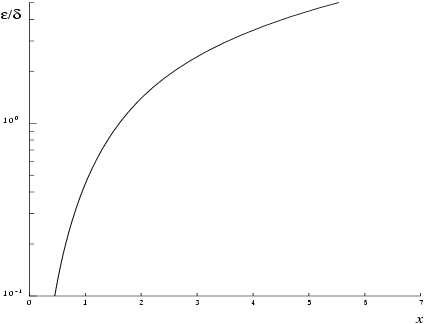NAG Library Function Document
nag_bessel_i0_vector (s18asc)
1 Purpose
nag_bessel_i0_vector (s18asc) returns an array of values of the modified Bessel function .
2 Specification
| #include <nag.h> |
| #include <nags.h> |
| void |
nag_bessel_i0_vector (Integer n,
const double x[],
double f[],
Integer ivalid[],
NagError *fail) |
|
3 Description
nag_bessel_i0_vector (s18asc) evaluates an approximation to the modified Bessel function of the first kind for an array of arguments , for .
Note: , so the approximation need only consider .
The function is based on three Chebyshev expansions:
For
,
For
,
For
,
For small
,
. This approximation is used when
is sufficiently small for the result to be correct to
machine precision.
For large , the function must fail because of the danger of overflow in calculating .
4 References
Abramowitz M and Stegun I A (1972) Handbook of Mathematical Functions (3rd Edition) Dover Publications
5 Arguments
- 1:
n – IntegerInput
On entry: , the number of points.
Constraint:
.
- 2:
x[n] – const doubleInput
On entry: the argument of the function, for .
- 3:
f[n] – doubleOutput
On exit: , the function values.
- 4:
ivalid[n] – IntegerOutput
On exit:
contains the error code for
, for
.
- No error.
- is too large. contains the approximate value of at the nearest valid argument. The threshold value is the same as for NE_REAL_ARG_GT in nag_bessel_i0 (s18aec), as defined in the Users' Note for your implementation.
- 5:
fail – NagError *Input/Output
-
The NAG error argument (see
Section 3.6 in the Essential Introduction).
6 Error Indicators and Warnings
- NE_BAD_PARAM
-
On entry, argument had an illegal value.
- NE_INT
-
On entry, .
Constraint: .
- NE_INTERNAL_ERROR
-
An internal error has occurred in this function. Check the function call and any array sizes. If the call is correct then please contact
NAG for assistance.
- NW_IVALID
-
On entry, at least one value of
x was invalid.
Check
ivalid for more information.
7 Accuracy
Let and be the relative errors in the argument and result respectively.
If
is somewhat larger than the
machine precision (i.e., if
is due to data errors etc.), then
and
are approximately related by:
Figure 1 shows the behaviour of the error amplification factor
However if is of the same order as machine precision, then rounding errors could make slightly larger than the above relation predicts.
For small the amplification factor is approximately , which implies strong attenuation of the error, but in general can never be less than the machine precision.
For large , and we have strong amplification of errors. However, for quite moderate values of (, the threshold value), the function must fail because would overflow; hence in practice the loss of accuracy for close to is not excessive and the errors will be dominated by those of the standard function exp.
8 Parallelism and Performance
Not applicable.
None.
10 Example
This example reads values of
x from a file, evaluates the function at each value of
and prints the results.
10.1 Program Text
Program Text (s18asce.c)
10.2 Program Data
Program Data (s18asce.d)
10.3 Program Results
Program Results (s18asce.r)

